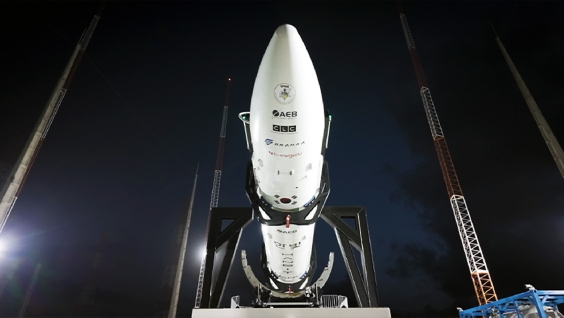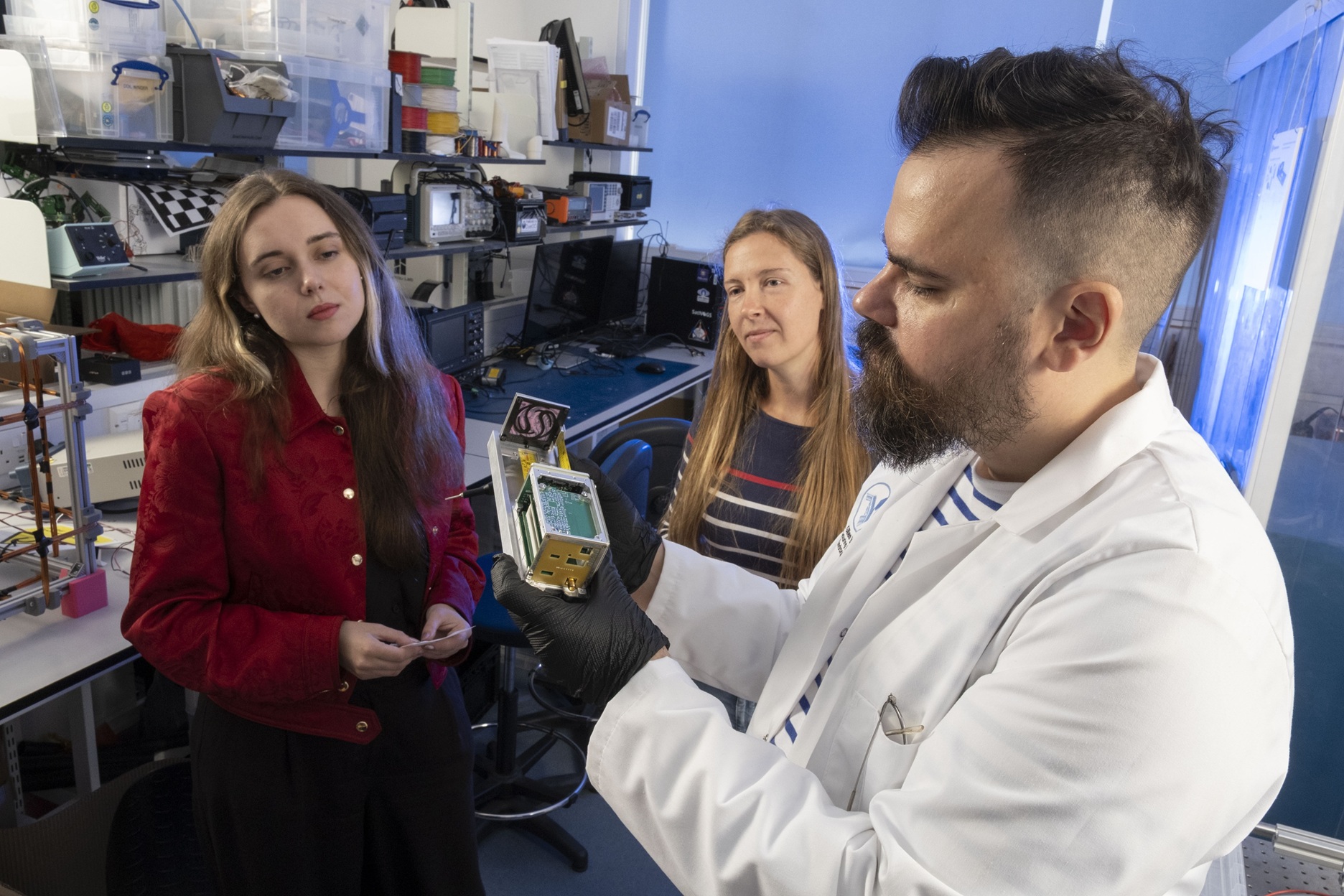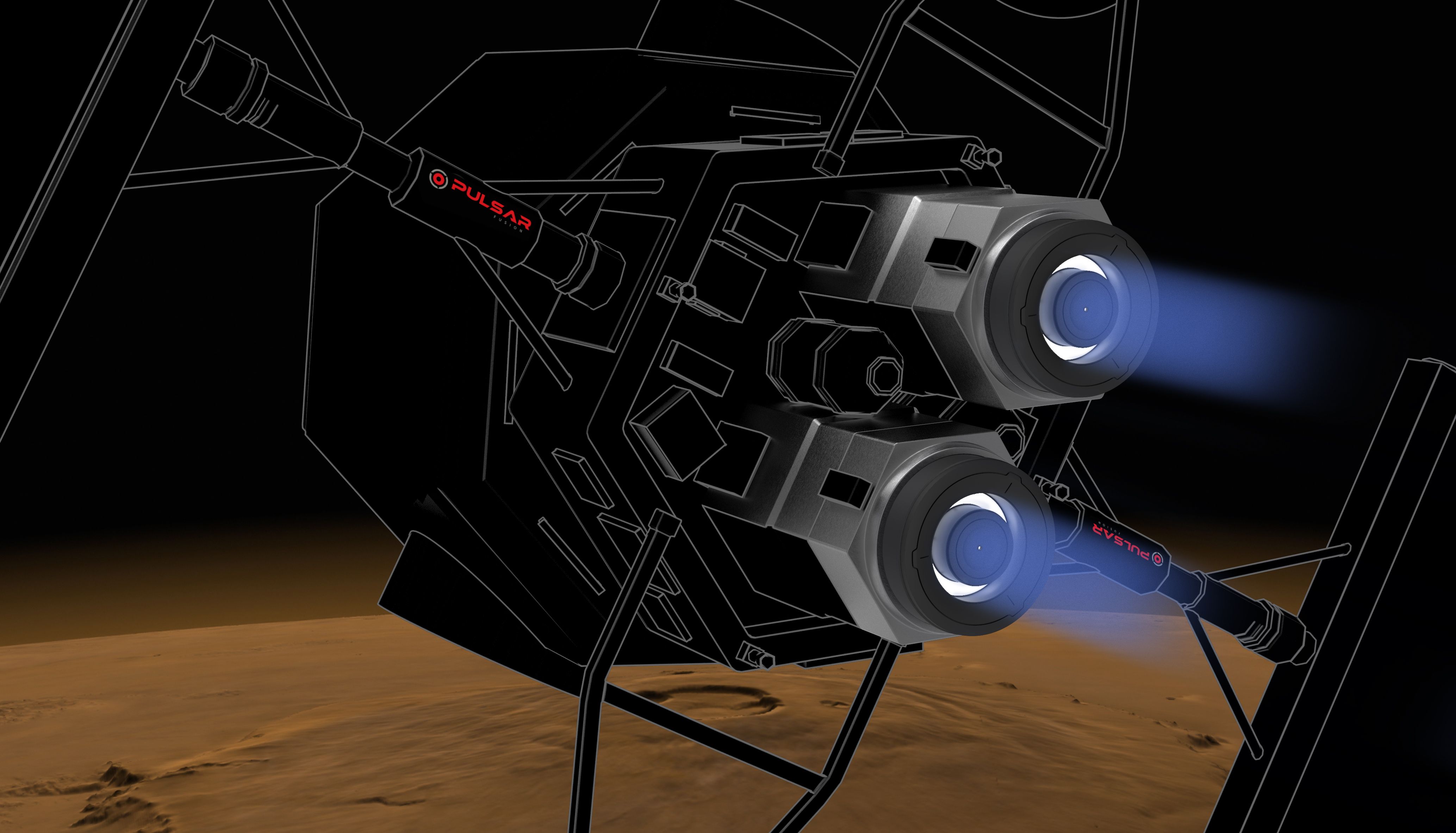Pulsar Fusion set to conduct UK's first fusion space test

Image courtesy Pulsar Fusion
Following successful vacuum and thermal tests here in the UK, it has just been revealed that the hardware is on track for a test launch from Florida in early 2026, likely using a SpaceX Falcon 9 rocket, in what experts describe as a major step forward for the UK aerospace industry.
It will be the first time a UK company has tested hardware of this kind in space - an important step in the development of technology with the potential to revolutionise space travel.
This week, five senior members of the Pulsar Fusion team, including scientist Dr Bilge Kacmaz and CEO Richard Dinan (above), were invited to Parliament this week to meet with Shadow Economic Secretary to the Treasury Mark Garnier MP, who congratulated them on the announcement which highlights the government’s interest in the UK’s role in space exploration.
The event marked a moment of national recognition for Pulsar’s leadership as they formally announced Pulsar’s first In-Orbit Demonstration (IOD) mission, which will test its proprietary Power Processing Unit (PPU) in space in the first quarter of 2026.
The PPU is a compact, high-efficiency power system designed to drive electric propulsion and ultimately fusion technologies.
This mission represents the first in-space demonstration of Pulsar’s core power platform, a key building block in its development of high-ISP propulsion solutions.
Pulsar’s PPU technology forms the foundation for a larger, supercapacitor-based system being developed for Sunbird, the company’s flagship fusion-powered transfer vehicle designed to support high-efficiency missions to the Moon, Mars, and beyond.
The test will likely blast off from SpaceX in Florida using a Falcon 9 rocket very early in 2026. Pulsar has been working on a space engine for several years and this test is a significant milestone on that journey.
Their scientists have created a special kind of 'brain + battery' called a PPU (Power Processing Unit).
This PPU is like the engine control box. It takes electricity and turns it into the exact form of energy needed to fire a space thruster - whether it’s a small electric engine like a Hall Effect Thruster, or part of a much bigger fusion propulsion system.
This newly announced space test will allow the PPU to be put through its paces in space and follows successful vacuum and thermal tests of the unit here in the UK.
If the test is successful Pulsar will prove the 'heart' of its propulsion systems actually works in orbit, not just in the lab.
Once proven, this same technology can then be used to not only drive small spacecraft using Hall Effect Thrusters (already used by satellites today), but also to scale up to handle the extreme power needed for experimental fusion engines - like Pulsar’s future Sunbird rocket.
A successful test will prove that Pulsar is on track to revolutionise space travel making missions to the moon and Mars much faster and potentially less expensive.
Pulsar Fusion CEO Richard Dinan said: “We were delighted to be invited to attend Parliament to meet with the Shadow Economic Secretary to the Treasury Mark Garnier MP this week.
“It’s hugely exciting to be able to announce this important step forward in Pulsar’s capability as we put our PPU to the test, not just here on earth but up there in space orbit where it really matters.
“Pulsar’s test will prove it can control and power a real space engine in orbit. If that works, the same tech can grow into a power source for future fusion rockets. That’s how today’s small test could unlock the future of deep space travel.”
Pulsar Fusion is a UK-headquartered propulsion company developing electric and fusion-based propulsion systems for space logistics and interplanetary missions. With advanced facilities in the UK and a new US presence in Texas, Pulsar is building the Sunbird: a reusable fusion-powered space tug capable of drastically reducing transit times to the Moon and Mars.












